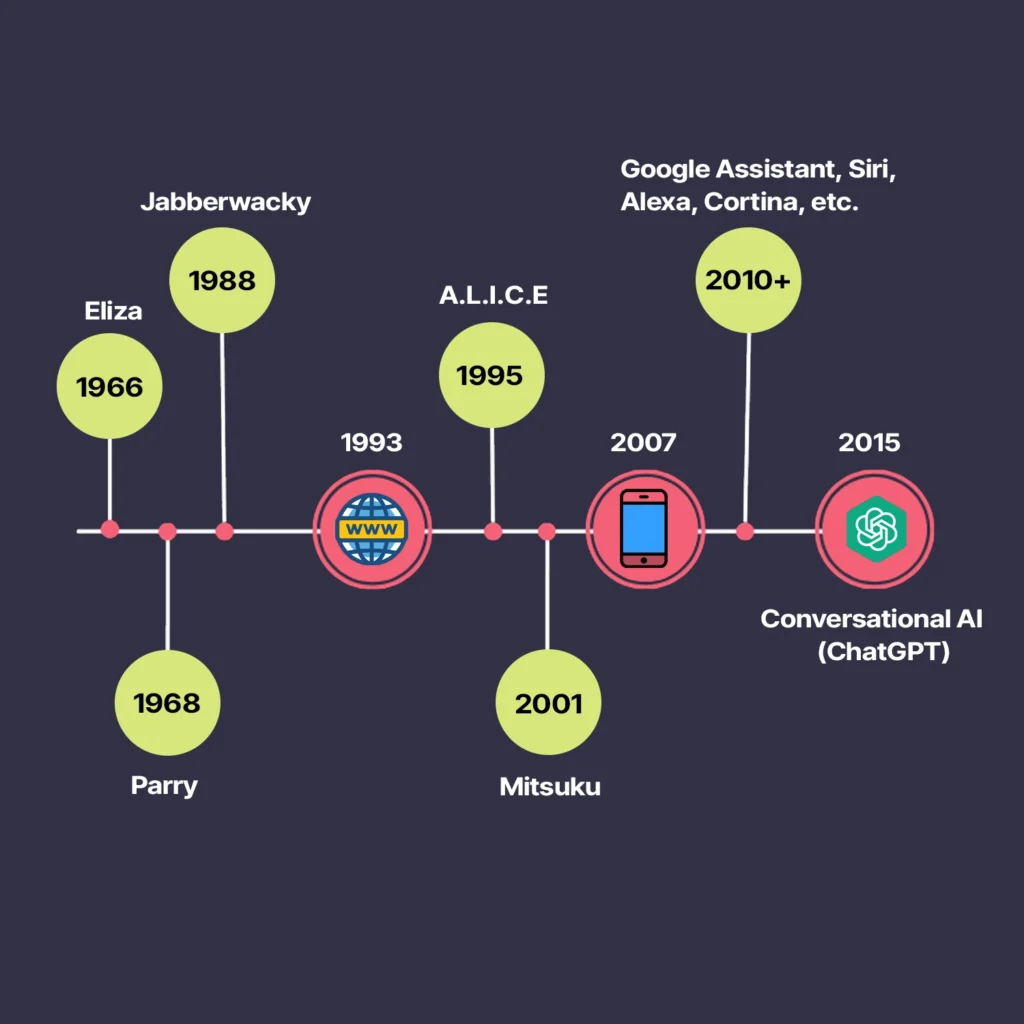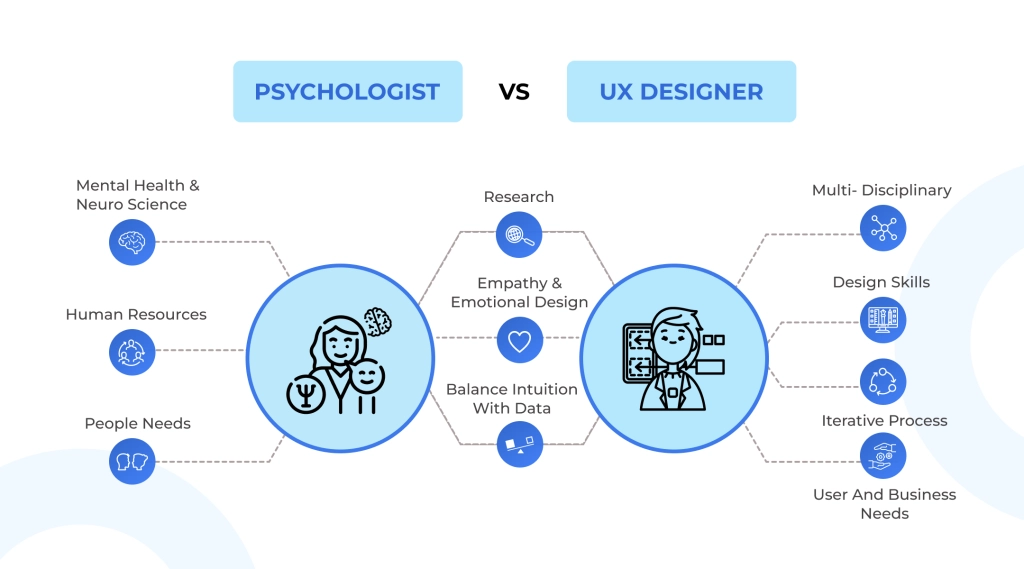Conversational AI is transforming how users search for information online. Instead of typing a few keywords into a search engine, users can now engage in natural conversations with AI-powered agents, thanks to advancements in artificial intelligence. This shift in search behavior leads to more refined and context-aware results, enhancing the user experience. These AI systems can understand and process complex queries, making the interaction more intuitive and efficient.
The impact of conversational AI on search behavior extends beyond just improving search results. It changes how users interact with technology, allowing for more personalized and dynamic exchanges. AI-driven systems are designed to mimic human interactions, which helps in building trust and engagement. This new approach not only serves individual users better but also opens up new avenues for businesses to connect with their customers.
Businesses are increasingly integrating conversational AI to enhance their operational efficiency and customer engagement. By leveraging advanced technologies such as natural language processing, companies can provide instant, accurate responses to consumer inquiries. This integration not only improves user satisfaction but also streamlines business processes, making it a key component in modern digital strategies.
Key Takeaways
- Conversational AI enhances the search experience by providing context-aware results.
- User engagement improves as AI systems mimic human interactions.
- Businesses benefit from integrating conversational AI into their operations.
Evolution of Conversational AI

The field of Conversational AI has evolved significantly over time, driven by advancements in machine learning, natural language processing, and the development of Large Language Models. Below are key milestones that have shaped its current state.
From Chatbots to Advanced Conversational Agents
Early chatbots like ELIZA and SHRDLU were capable of basic text interactions but lacked contextual awareness. These early systems used rule-based approaches to simulate conversation, leading to limited and often repetitive interactions.
As technology progressed, more sophisticated chatbots emerged. ALICE, Jabberwacky, and Cleverbot were able to learn and adapt, showing improved responses, yet still had limitations in understanding context and nuance. Today, advanced Conversational Agents are capable of maintaining context over longer interactions, offering more natural and seamless communication experiences.
Role of Machine Learning and NLP
Machine Learning and Natural Language Processing (NLP) have played crucial roles in the development of Conversational AI. Specifically, machine learning algorithms analyze vast amounts of data to find patterns, enabling more accurate predictions and responses. Meanwhile, NLP techniques allow machines to understand and interpret human language, including semantics and syntax.
The integration of these technologies has enabled Conversational AI to go beyond simple text-based interactions. For example, it now includes voice assistants like Siri and Alexa, which use speech recognition and natural language understanding to interact with users more effectively. Consequently, this progress has made conversational agents more intuitive and user-friendly. Moreover, the implications of AI extend beyond just technical advancements, offering significant benefits in various applications.
Generative AI and Large Language Models
Generative AI has revolutionized Conversational AI with the introduction of Large Language Models (LLMs) such as GPT-3 and GPT-4. These models can generate human-like text, making interactions more coherent and contextually appropriate.
By leveraging vast datasets, LLMs can understand and produce responses that are contextually relevant and highly accurate. This has led to the development of sophisticated conversational agents like ChatGPT, which can engage in detailed and meaningful conversations on a wide range of topics.
The combination of Generative AI and LLMs has significantly enhanced the capability of Conversational AI, making it a powerful tool for various applications, from customer service to personal assistants.

Examples of Conversational AI Transforming Search Behavior Across Industries
Conversational AI is not just a technological advancement; moreover, it’s a transformative force reshaping how industries operate and interact with their users. Specifically, here are examples of how different sectors are leveraging conversational AI to revolutionize search behavior and enhance user experiences:
E-commerce: Enhancing the Shopping Experience
In the e-commerce sector, conversational AI is redefining how consumers search for products. AI-powered chatbots and virtual shopping assistants are providing personalized recommendations based on user preferences and browsing history. For example, Sephora’s chatbot on Facebook Messenger helps customers find the right makeup products by asking a series of questions about their preferences and needs. This conversational approach makes the shopping experience more interactive and tailored, leading to higher customer satisfaction and increased sales.
Healthcare: Improving Patient Interaction and Information Retrieval
In healthcare, conversational AI is streamlining patient interactions and improving access to medical information. For example, AI-driven chatbots like Ada and Woebot offer symptom checks and mental health support through natural language conversations. Consequently, patients can describe their symptoms in their own words, and the chatbot provides relevant information or directs them to appropriate healthcare services. As a result, this not only enhances patient engagement but also reduces the burden on medical staff by handling routine inquiries efficiently.
Finance: Revolutionizing Customer Service and Financial Advice
The finance industry is also witnessing significant transformations due to conversational AI. Banks and financial institutions are using AI-powered virtual assistants to provide instant customer support and financial advice. For instance, Bank of America’s Erica helps customers manage their finances by answering questions, providing spending insights, and alerting users to important account activities. This level of personalized, real-time assistance enhances customer experience and trust, making financial services more accessible and user-friendly.
Travel and Hospitality: Personalizing Travel Planning
In the travel and hospitality industry, conversational AI is enhancing how travelers search for and book services. For example, chatbots like KLM’s BlueBot assist customers with flight bookings, provide travel recommendations, and offer real-time updates on flight status. By interacting with customers through natural language, these AI systems make the travel planning process more efficient and enjoyable. Consequently, this ultimately leads to increased customer loyalty and satisfaction.
Education: Facilitating Learning and Administrative Tasks
Educational institutions are adopting conversational AI to support both learning and administrative functions. AI-driven chatbots like Ivy.ai assist students with admissions processes, answer questions about campus resources, and provide reminders for important deadlines. Additionally, platforms like Duolingo use conversational AI to create interactive language learning experiences, adapting to the learner’s proficiency and providing personalized feedback. These applications make education more accessible and engaging for students.
Changing User Expectations and Behaviors: The Impact of Conversational AI and Voice Search
Conversational AI is reshaping user expectations and behaviors by making interactions with technology more intuitive and human-like. This shift is most evident in the growing adoption of voice search, which is fundamentally altering how users consume information and interact with digital content.
Evolution of User Expectations
Users now expect immediate, accurate, and contextually relevant responses from their interactions with digital systems. Specifically, conversational AI, with its ability to understand and process natural language, meets these expectations by providing more personalized and dynamic experiences. Consequently, this evolution in expectations is driven by several factors:
- Human-Like Interactions: Users prefer interacting with systems that can understand and respond in natural language, mimicking human conversation. Consequently, this reduces the need for learning specific commands or navigating complex interfaces.
- Context Awareness: AI systems can maintain context over multiple interactions, allowing for more coherent and relevant responses. Users expect these systems to remember previous interactions and tailor responses accordingly.
- Instant Gratification: The demand for quick and efficient solutions has increased. Conversational AI provides immediate responses, reducing the time users spend searching for information.
Voice Search and Its Impact on Information Consumption
Voice search is a prime example of how conversational AI is transforming user behavior. Indeed, with the proliferation of voice-activated assistants like Siri, Alexa, and Google Assistant, users are increasingly turning to voice search for their informational needs. Consequently, this shift impacts information consumption habits in several ways:
- Hands-Free Convenience: Voice search allows users to access information without needing to type or navigate through screens. This is particularly useful in situations where hands-free operation is preferred, such as while driving or cooking.
- Natural Language Queries: Unlike traditional keyword-based searches, voice search queries are more conversational and often resemble natural speech. This changes the way content is created and optimized, as it needs to match the natural language patterns of voice queries.
- Increased Specificity: Users tend to ask more specific and detailed questions through voice search, expecting precise answers. This specificity requires AI systems to understand context and provide concise, accurate information.
- Behavioral Shifts: The ease and efficiency of voice search encourage users to rely more on voice-activated assistants for daily tasks, from setting reminders to searching for local businesses. Consequently, this behavior shift is gradually integrating voice search into everyday routines..
Implications for Businesses and Content Creators
The rise of conversational AI and voice search presents both opportunities and challenges for businesses and content creators:
- Content Optimization: To capture voice search traffic, businesses need to optimize their content for natural language queries. This includes using long-tail keywords and structured data to improve search engine visibility.
- Enhanced User Engagement: Businesses can leverage conversational AI to create more engaging and interactive user experiences. This can lead to higher customer satisfaction and loyalty.
- Adapting Marketing Strategies: Marketers need to adjust their strategies to account for the increasing use of voice search. This involves creating content that answers specific questions and provides value in a conversational tone.
User Experience and Behavioral Implications

Conversational AI (CAI) search engines greatly influence how users interact with digital tools, affecting trust, empathy, personalization, engagement, and decision-making. These changes alter the overall user experience.
Trust and Empathy in Digital Interactions
CAI creates more human-like interactions, fostering trust. Consequently, users feel more valued and understood when engaging with a system that mimics human empathy. Moreover, trust is vital for user retention. For instance, effective communication from CAI can improve user satisfaction and comfort, leading to repeated use.This empathy-building is a key feature of evolving AI systems like those studied in a systematic review.
Personalization and User Engagement
Personalization drives deeper user engagement. Specifically, CAI systems can tailor responses based on user history and preferences, making interactions feel unique and relevant. Consequently, this personalization enhances the user experience, leading to more meaningful interactions. For example, AI chatbots analyze user behavior and provide tailored content in real time, as outlined in our ‘AI Chatbots for Engagement: How They’re Transforming Conversational Marketing‘ blog post.
Impact on Decision Making Processes
CAI significantly impacts users’ decision-making processes. By providing clear and relevant information quickly, CAI helps users make informed decisions with confidence. Furthermore, CAI’s ability to present concise, relevant search results improves users’ efficiency in decision-making. This efficiency is particularly notable in clinical settings where AI-based CAs support mental health care, as reviewed in the Artificial intelligence (AI) and machine learning (ML) based decision support systems in mental health.
Future Developments in Conversational AI and Their Implications for Search
As conversational AI continues to evolve, several potential developments are on the horizon that could further transform search behavior and user interactions. These advancements promise to make AI systems more intelligent, intuitive, and integrated into everyday life, offering exciting possibilities for both users and businesses.
Advanced Contextual Understanding
Future conversational AI systems are expected to have an even deeper understanding of context, enabling more nuanced and precise interactions. By leveraging advancements in machine learning and natural language processing, these systems will be able to:
- Understand Nuanced Queries: AI will handle more complex and ambiguous queries, understanding subtleties such as tone, intent, and implied meaning. This will lead to more accurate and relevant search results.
- Maintain Extended Conversations: Enhanced contextual memory will allow AI to maintain the context of conversations over longer periods, making interactions more seamless and coherent. Users will be able to pick up conversations exactly where they left off, regardless of the time gap.
Integration with Augmented Reality (AR) and Virtual Reality (VR)
The integration of conversational AI with AR and VR technologies holds immense potential for transforming search and user interactions:
- Immersive Search Experiences: Imagine searching for a new home and being able to take a virtual tour guided by an AI assistant who answers your questions in real-time. This combination can provide a more immersive and interactive search experience.
- Enhanced Learning Environments: Educational content can be delivered in more engaging ways, with AI-guided AR and VR experiences that adapt to the learner’s pace and style, offering explanations and insights as needed.
Personalization and Predictive Analytics
The future of conversational AI will see a greater emphasis on personalization and predictive capabilities:
- Hyper-Personalized Interactions: AI systems will use extensive data to provide highly personalized interactions, offering recommendations and information tailored to individual preferences and behaviors.
- Predictive Search: By analyzing past interactions and behaviors, AI can anticipate user needs and suggest relevant information or actions before the user even asks. This predictive capability will make the search experience more proactive and efficient.
Ethical AI and Enhanced Privacy
As conversational AI becomes more pervasive, ethical considerations and privacy protection will be paramount:
- Bias Mitigation: Future AI systems will incorporate advanced techniques to identify and mitigate biases, ensuring fair and equitable interactions for all users.
- Enhanced Privacy Controls: Users will have more control over their data, with AI systems providing transparent explanations of how data is used and offering robust privacy settings. This will build trust and confidence in AI technologies.
Implications for Businesses and Technology
The anticipated developments in conversational AI will have profound implications for businesses and technology:
- Revolutionizing Customer Service: Businesses will be able to offer more responsive and personalized customer service, reducing wait times and increasing customer satisfaction.
- Innovative Marketing Strategies: Marketers will need to adapt to new search behaviors, creating content and campaigns that leverage advanced AI capabilities and predictive analytics.
- Integration into Everyday Life: AI will become a ubiquitous part of daily life, seamlessly integrated into various devices and applications, making interactions more intuitive and efficient.
Business Integration and Market Impacts

Businesses are transforming how they interact with customers, refine marketing strategies, and drive sales in AI-driven marketplaces through conversational AI.
Essential in Customer Service: Conversational AI
Conversational AI has become an essential tool in customer service. It allows businesses to manage inquiries efficiently and on a large scale. AI-powered chatbots can handle a high volume of repetitive questions, freeing up human agents for complex issues. This not only speeds up response times but also reduces operational costs.
In sectors like finance, implementing AI in customer service enhances client satisfaction and trust. Customers appreciate quick resolutions and 24/7 availability. Moreover, these chatbots can collect valuable data during interactions, which helps businesses improve their services and customer experience.
Marketing Strategies and Conversational Analytics
AI-driven conversational tools are reshaping marketing strategies by providing deep insights into customer behavior. By analyzing interaction data, businesses can better understand customer preferences and tailor their marketing efforts accordingly. These tools track what products customers are interested in and how they interact with the brand.
Marketing teams use this information to create targeted campaigns that are more likely to convert. For example, personalized product recommendations based on past interactions can significantly increase sales. Additionally, conversational analytics help businesses identify trends and adapt their strategies swiftly, ensuring they stay competitive.
AI-driven Marketplace and Conversion
The rise of conversational AI has paved the way for enhanced e-commerce experiences. Specifically, in an AI-driven marketplace, chatbots guide customers through their shopping journey, offering product recommendations and answering questions in real-time. Consequently, this interactive experience can lead to higher conversion rates.
Conversational commerce, where transactions are completed through chat interfaces, is becoming more common. It simplifies the purchasing process and provides a seamless experience. For businesses, this translates into increased sales and customer loyalty. Predictions suggest that by 2025, digital assistants could reduce client service costs significantly, showcasing the long-term financial benefits of integrating conversational AI.
Technical Aspects and Interoperability

The technical aspects of conversational AI focus on integrating these systems with other technologies and improving their performance through advanced techniques. Specifically, key areas include voice assistants and IoT integration, the use of reinforcement learning for response optimization, and addressing challenges in natural language understanding.
Voice Assistants and IoT Integration
Voice assistants like Alexa and Google Assistant have become more integrated with Internet of Things (IoT) devices. Consequently, this integration allows users to control smart home devices using simple voice commands, enhancing efficiency and usability.
By linking voice assistants with IoT, users can manage thermostats, lights, and security systems without needing a manual interface. Therefore, this seamless interaction improves user experience, making technology more accessible and intuitive.
Moreover, manufacturers are focusing on interoperability standards to ensure that various devices and systems can work together. This involves developing common protocols and APIs that allow different brands and devices to communicate effectively, promoting a more unified smart home ecosystem.
Reinforcement Learning for Response Optimization
Reinforcement learning is a technique used to improve the responses of conversational AI systems. By using algorithms that learn from previous interactions, these systems can better understand user preferences and provide more accurate and relevant responses.
This method involves training models using a reward system, where the AI receives positive feedback for accurate responses and negative feedback for errors. Consequently, over time, the system becomes more adept at predicting user needs and improving its performance.
Furthermore, reinforcement learning helps conversational AI systems adapt to different contexts and user behaviors. This continuous learning process enhances the usability of these systems, making them more responsive and personalized.
Challenges in Natural Language Understanding
Natural Language Understanding (NLU) remains one of the biggest challenges in conversational AI. NLU involves the ability of a machine to understand and interpret human language as it is spoken or written.
The complexity of human language, with its nuances, idioms, and varying contexts, makes it difficult for AI systems to achieve high accuracy. Consequently, misinterpretations can lead to incorrect responses, frustrating users.
Researchers are working on advanced techniques to improve NLU, such as deep learning and the use of large language models like GPT-3. These models have shown promise in capturing context and understanding long-range dependencies in text, thereby improving the overall performance of conversational AI systems.
Theoretical and Ethical Considerations
Understanding the ethical and theoretical implications of Conversational AI helps us navigate its complexities. Key concerns include the humanization of these agents, their societal impacts, and privacy issues related to user data.
Anthropomorphism and Verbal Embodiment
Anthropomorphism refers to the attribution of human traits to AI. Verbal embodiment involves giving these systems human-like voices and responses. This can strengthen user engagement but also lead to unrealistic expectations. Users may rely on AI for social support, impacting their well-being.
A major issue is psychological distress when users perceive the AI as more capable than it is. Misleading anthropomorphism can make users think they are talking to a real person, which can blur ethical lines in marketing and customer service.
Societal Impacts and Ethical Responsibility
Conversational AI influences society in profound ways. For instance, in fields like education and medicine, AI provides consistent, on-demand interaction but may lack the empathy of human interaction. Developers must consider the ethical responsibility of their work, ensuring AI does not perpetuate biases or misinformation.
Ethical frameworks suggest responsible development to minimize harm and promote well-being. Companies should prioritize transparency and accountability to gain public trust. As Conversational AI becomes more common, the need for clear ethical guidelines grows.
Privacy Concerns in Conversational Data
Privacy remains a significant concern with Conversational AI. These systems often collect extensive user data to improve interactions, raising the risk of data breaches. Companies must ensure user data is encrypted and anonymized.
Moreover, users should be clearly informed about how their data will be used. Respecting privacy can prevent misuse and build trust. Implementing strict data protection policies helps, especially when dealing with sensitive information like health or financial data. Companies bear the responsibility to safeguard against unauthorized access and misuse of information.
Frequently Asked Questions
Conversational AI has transformed user search behaviors by enabling natural language interactions, influencing purchasing decisions, and reshaping traditional search methodologies.
How has the use of Conversational AI changed user search patterns on the internet?
Conversational AI, like chatbots and virtual assistants, allows users to interact using natural language, making searches more intuitive and efficient. This shift enhances user experience by providing faster and more accurate results, as users can articulate their queries more naturally.
In what ways has voice-activated AI influenced online consumer purchasing decisions?
Voice-activated AI makes it easier for consumers to search for and purchase products using simple voice commands. This convenience leads to quicker decision-making and an increase in impulse purchases. Additionally, it allows for hands-free shopping experiences, which is especially useful for multitasking consumers.
What are the comparative effects of different virtual assistants on users’ search behaviors and purchase intentions?
Different virtual assistants, like Alexa, Siri, and Google Assistant, have unique responses and search capabilities, affecting user preferences and purchasing behaviors. Some users may prefer one assistant over another based on response accuracy, ease of use, or integration with their devices. This variety can influence brand loyalty and purchase choices.
How do advancements in Conversational AI technology alter traditional web search methodologies?
Advancements in Conversational AI technology enable more precise and contextually relevant search results. Traditional keyword-based searches are being replaced by queries that resemble everyday language. This evolution reduces the need for users to think in terms of keywords, enhancing overall search efficiency and user satisfaction.
What are the observable trends in user search behavior as a result of Conversational AI interactions?
Users are increasingly favoring conversational interactions over traditional text-based searches. This shift is evident in the rising use of voice search and chatbots on websites and apps. As a result, there is a noticeable trend towards more personalized and immediate search experiences catering to individual user needs.
How does the integration of Conversational AI into search platforms reshape user expectations and search experiences?
With the integration of Conversational AI, users now expect faster, more accurate, and more intuitive search experiences. They anticipate that search platforms will understand the context and provide relevant results efficiently. This has raised the bar for search engines and applications to offer more sophisticated and user-friendly interfaces.